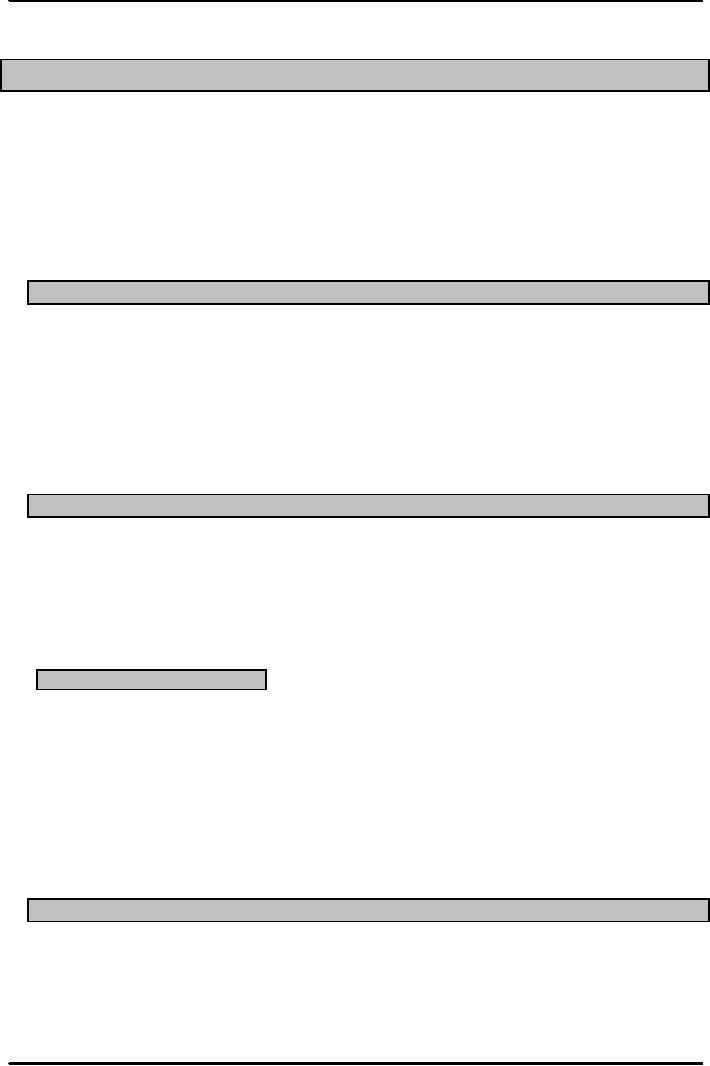 |

Production
and Operations Management
MGT613
VU
Lesson
36
JUST
IN TIME PRODUCTION
SYSTEMS
Just
In Time Production or Lean
Production systems focus on the efficient
delivery of products or
services.
Some of the distinguishing elements of
the JIT systems are a pull
method to manage material
flow,
consistently high quantity,
small lot sizes, uniform
work station loads. The JIT
systems provide an
organizational
structure for improved supplier
coordination by integrating the
logistics, production and
purchasing
processes. When Operations Manager
focuses on their organization's
competitive advantage
they
aim for low cost of
production, consistent quality
with reductions in inventory, space
requirements,
paperwork
and increases in productivity, employee
participation and effectiveness.
JIT/Lean
Production
Lean
Manufacturing: is a management philosophy
focusing on reduction of the seven
wastes.
1.
Over-production ( Capacity exceeding
demand)
2.
Waiting time
3.
Transportation
4.
Processing
5.
Costs
6.
Inventory
7.
Motion ( Lack of coordination of
body movements)
JIT/Lean
Production Features
By
eliminating waste (muda),
quality is improved, production
time is reduced and cost
is
reduced.
"Pull"
production (by means of
Kanban).
While
some believe that Lean
Manufacturing is a set of problem
solving tools.
In
addition, experts in this field
believe that philosophy-based
Lean Manufacturing strategy
is
the most effective way to
launch and sustain lean
activities.
Key
lean manufacturing
principles
1.
Key
lean manufacturing principles
include:
2.
Perfect
first-time quality - quest
for zero defects
3.
Waste
minimization
4.
Continuous
improvement
5.
Pull
processing: products are pulled from the
consumer end, not pushed
from the production
end.
6.
Flexibility
7.
Building and maintaining a
long term relationship with suppliers
through collaborative
risk
sharing,
cost sharing and information sharing
arrangements.
Applications
of Lean Manufacturing
1.
Lean
Healthcare Systems
2.
Lean
Software Manufacturing
3.
Systems
Engineering
4.
Lean
Systems in Defense
Industry
168

Production
and Operations Management
MGT613
VU
Generic
Strategy for Implementation of a
Lean program
1.
Top
Management to agree and discuss
their lean vision.
2.
Management
brainstorm to identify project leader
and set objectives.
3.
Communicate
plan and vision to the
workforce.
4.
Ask
for volunteers to form the
Lean Implementation
team.
5.
Appoint
members of the Lean Manufacturing
Implementation Team.
6.
Train
the Implementation Team in the various
lean tools.
Organizational
and Operational Strategies
1.
Organizations aiming for JIT
system should focus on the Human
Resource Management
with
proper
system of incentives, rewards, labor
classification, cooperation and trust in
place.
2.
Organizations should concentrate on
effective management of inventory,
purchasing, logistics
and
scheduling.
3.
Organizations should develop a
demand base system so less
waste is generated and
good
management
of high quality, small lot
sizes, good quality, standardized
components and work
methods
is ensured.
4.
Lean or JIT Systems are
effective only if they are
designed to produce or deliver the
right
product
or the right services in the right
quantities just in time to
serve subsequent processes
or
customers.
5.
Organizations who design their Operations
on JIT philosophy need to
encourage partnership
concept
whether it's between organizations's
purchasing department and supplier or
partnership
between
management and labor.
169
Table of Contents:
- INTRODUCTION TO PRODUCTION AND OPERATIONS MANAGEMENT
- INTRODUCTION TO PRODUCTION AND OPERATIONS MANAGEMENT:Decision Making
- INTRODUCTION TO PRODUCTION AND OPERATIONS MANAGEMENT:Strategy
- INTRODUCTION TO PRODUCTION AND OPERATIONS MANAGEMENT:Service Delivery System
- INTRODUCTION TO PRODUCTION AND OPERATIONS MANAGEMENT:Productivity
- INTRODUCTION TO PRODUCTION AND OPERATIONS MANAGEMENT:The Decision Process
- INTRODUCTION TO PRODUCTION AND OPERATIONS MANAGEMENT:Demand Management
- Roadmap to the Lecture:Fundamental Types of Forecasts, Finer Classification of Forecasts
- Time Series Forecasts:Techniques for Averaging, Simple Moving Average Solution
- The formula for the moving average is:Exponential Smoothing Model, Common Nonlinear Trends
- The formula for the moving average is:Major factors in design strategy
- The formula for the moving average is:Standardization, Mass Customization
- The formula for the moving average is:DESIGN STRATEGIES
- The formula for the moving average is:Measuring Reliability, AVAILABILITY
- The formula for the moving average is:Learning Objectives, Capacity Planning
- The formula for the moving average is:Efficiency and Utilization, Evaluating Alternatives
- The formula for the moving average is:Evaluating Alternatives, Financial Analysis
- PROCESS SELECTION:Types of Operation, Intermittent Processing
- PROCESS SELECTION:Basic Layout Types, Advantages of Product Layout
- PROCESS SELECTION:Cellular Layouts, Facilities Layouts, Importance of Layout Decisions
- DESIGN OF WORK SYSTEMS:Job Design, Specialization, Methods Analysis
- LOCATION PLANNING AND ANALYSIS:MANAGING GLOBAL OPERATIONS, Regional Factors
- MANAGEMENT OF QUALITY:Dimensions of Quality, Examples of Service Quality
- SERVICE QUALITY:Moments of Truth, Perceived Service Quality, Service Gap Analysis
- TOTAL QUALITY MANAGEMENT:Determinants of Quality, Responsibility for Quality
- TQM QUALITY:Six Sigma Team, PROCESS IMPROVEMENT
- QUALITY CONTROL & QUALITY ASSURANCE:INSPECTION, Control Chart
- ACCEPTANCE SAMPLING:CHOOSING A PLAN, CONSUMER’S AND PRODUCER’S RISK
- AGGREGATE PLANNING:Demand and Capacity Options
- AGGREGATE PLANNING:Aggregate Planning Relationships, Master Scheduling
- INVENTORY MANAGEMENT:Objective of Inventory Control, Inventory Counting Systems
- INVENTORY MANAGEMENT:ABC Classification System, Cycle Counting
- INVENTORY MANAGEMENT:Economic Production Quantity Assumptions
- INVENTORY MANAGEMENT:Independent and Dependent Demand
- INVENTORY MANAGEMENT:Capacity Planning, Manufacturing Resource Planning
- JUST IN TIME PRODUCTION SYSTEMS:Organizational and Operational Strategies
- JUST IN TIME PRODUCTION SYSTEMS:Operational Benefits, Kanban Formula
- JUST IN TIME PRODUCTION SYSTEMS:Secondary Goals, Tiered Supplier Network
- SUPPLY CHAIN MANAGEMENT:Logistics, Distribution Requirements Planning
- SUPPLY CHAIN MANAGEMENT:Supply Chain Benefits and Drawbacks
- SCHEDULING:High-Volume Systems, Load Chart, Hungarian Method
- SEQUENCING:Assumptions to Priority Rules, Scheduling Service Operations
- PROJECT MANAGEMENT:Project Life Cycle, Work Breakdown Structure
- PROJECT MANAGEMENT:Computing Algorithm, Project Crashing, Risk Management
- Waiting Lines:Queuing Analysis, System Characteristics, Priority Model